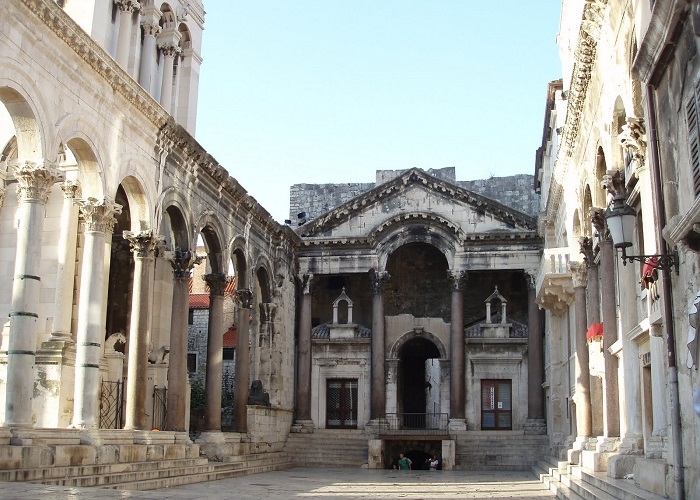It’s called a Palace but in the fact it’s a fortress -cum- military camp with huge gates and watchtowers, built on the shore of Adriatic Sea four miles from Salona, the capital of the Roman Province of Dalmatia. The palace was supposed to be a retirement home for the Roman Emperor Diocletian who was born in the Roman Province of Dalmatia to a family of low status, and who rose through the ranks to become emperor.
The grandiose Diocletian Palace, the UNESCO site, covers 30000 sq meters and is filled with history. The Palace is divided by intersecting streets – cardo and decumanus. While cardo streets lead to the main square of the Palace, the decumanus street divides the Palace into the northern part allocated for servants and the southern part reserved for the imperial family. Both streets lead to the Palace gates, four in total – Porta Aurea (Golden Gate), Porta Argentea (Silver Gate), Porta Ferrea (Iron Gate) and Porta Aenea (Brass Gate).
Within the Palace wall there is a court, called Peristyle, three temples and Diocletian’s mausoleum. Two out of the three temples are lost and third, originally known as the temple of Jupiter, became a baptistery. The Peristyle is decorated with granite brought from the site of the Egyptian Pharaoh Thutmose III.
The palace is built in a perfect rectangle, size 160 m x 190 m, with the southern part, open towards the sea, unfortified and used as the emperor’s private access to the sea or as the entrance for food supplies. The palace could house up to 9000 people and had a very good water supply from the Jadro River near Salona, the capital of the Roman Province of Dalmatia. Today the Roman pipes which were restored in XIX c can be seen along the road.
The Diocletian Palace was forgotten about in the West from the Middle Ages until 1764 when the Ruins of the Palace of the Emperor Diocletian at Spalatro in Dalmatia by the Scottish neo-classical architect Robert Adam was published in London and become the inspiration for a new style of neoclassical architecture in Europe.
Split, the second largest city of Croatia, is built around the Palace. You are allowed to wander around the remains of the palace but we would suggest you book a guide and see the excavated remains of the basement of the palace.

No comments:
Post a Comment
Comment is free